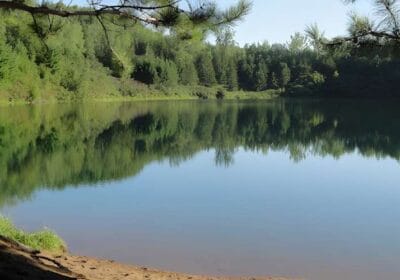Williamsburg was founded in 1699 as the capital of the Virginia Colony. It replaced Jamestown as the capital, which had been the seat of government for the colony since its founding in 1607. The city was named in honor of King William III of England.
During the 18th century, Williamsburg became a bustling center of colonial life. The city was home to the College of William and Mary, which was founded in 1693 and is the second-oldest institution of higher education in the United States. The college played an important role in the city’s intellectual and cultural life, and its alumni include several U.S. presidents, including Thomas Jefferson.
The Restoration of Colonial Williamsburg
The restoration of Colonial Williamsburg began in the 1920s, when a group of concerned citizens led by John D. Rockefeller Jr. began purchasing and restoring historic buildings in the city. They worked to recreate the city’s appearance and atmosphere from the 18th century, using historical research and careful attention to detail to ensure accuracy.
Today, Colonial Williamsburg is a living history museum that includes more than 500 restored and reconstructed buildings, many of which are open to the public. Visitors can explore the city’s historic streets, visit museums and galleries, and interact with costumed interpreters who bring the past to life.
Attractions in Colonial Williamsburg
One of the most popular attractions in Colonial Williamsburg is the Governor’s Palace, which was the official residence of Virginia’s colonial governors from 1710 to 1779. The palace was restored in the 1930s and is now open to the public. Visitors can explore the palace’s ornate interiors, including the ballroom and state rooms, and learn about life in colonial Virginia.
Another popular attraction is the Capitol Building, which served as the seat of government for Virginia from 1705 to 1779. The building was restored in the 1930s and is now home to exhibits on colonial government and law.
Visitors can also explore the Bruton Parish Church, which was established in 1674 and played an important role in the religious and civic life of Williamsburg. The church was restored in the 1950s and is now an active Episcopal church as well as a popular tourist destination.
Living History in Colonial Williamsburg
The living history program in Colonial Williamsburg is one of its most unique and popular features. Visitors can interact with costumed interpreters who portray a wide range of characters from 18th century Virginia, including merchants, artisans, slaves, and members of the gentry.
The interpreters bring the past to life through demonstrations of traditional crafts and skills, such as blacksmithing, weaving, and candle-making. Visitors can also attend lectures, participate in historical games and activities, and take part in reenactments of historical events, such as the reading of the Declaration of Independence.
Dining and Shopping in Colonial Williamsburg
Colonial Williamsburg is home to a wide variety of dining and shopping options. Visitors can dine in traditional taverns, such as the King’s Arms Tavern or the Chowning’s Tavern, which offer colonial-style fare and live entertainment. Modern restaurants and cafes are also available, offering a variety of cuisine from around the world.
Shopping options include traditional crafts and souvenirs, such as handmade pottery and wooden toys, as well as modern boutiques and galleries. The Williamsburg Farmer’s Market is also a popular destination for visitors, offering fresh produce and handmade goods from local farmers and artisans.
Tips for Visiting Colonial Williamsburg
To make the most of your visit to Colonial Williamsburg, it’s important to plan ahead and be prepared. Here are a few additional tips for visitors:
- Purchase tickets in advance: To avoid long lines and ensure availability, it’s a good idea to purchase tickets to Colonial Williamsburg in advance. You can purchase tickets online or at the Visitor Center when you arrive.
- Wear comfortable shoes: There is a lot of walking involved in exploring Colonial Williamsburg, so be sure to wear comfortable shoes. The streets are also uneven and can be challenging for people with mobility issues.
- Check the schedule: The living history program at Colonial Williamsburg follows a schedule, with different demonstrations and events happening throughout the day. Be sure to check the schedule ahead of time to plan your visit and make the most of your time in the city.
- Bring a water bottle: It can get hot and humid in Virginia during the summer months, so be sure to bring a water bottle to stay hydrated. There are also water fountains and refill stations throughout the city.
- Take advantage of special events: Colonial Williamsburg hosts a variety of special events throughout the year, including holiday celebrations, concerts, and historical reenactments. Check the calendar of events ahead of time to see what’s happening during your visit.
Conclusion
Colonial Williamsburg is a unique and fascinating destination that offers visitors a chance to step back in time and experience life in colonial Virginia. From its historic buildings and landmarks to its living history program and modern amenities, Colonial Williamsburg has something for everyone. By following these tips and taking the time to explore all that the city has to offer, you’re sure to have a memorable and enjoyable visit.





